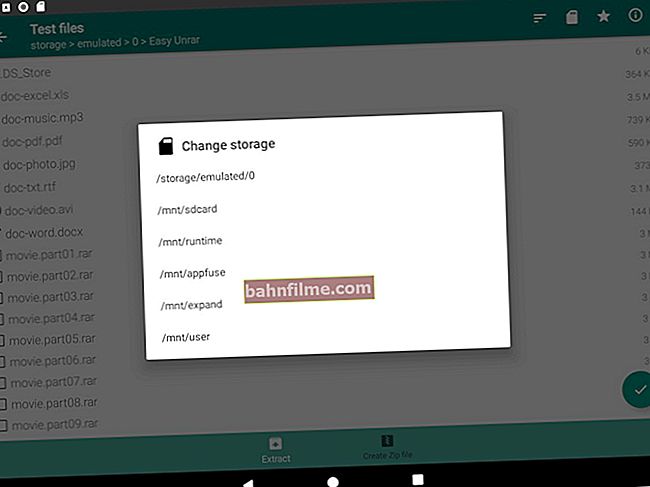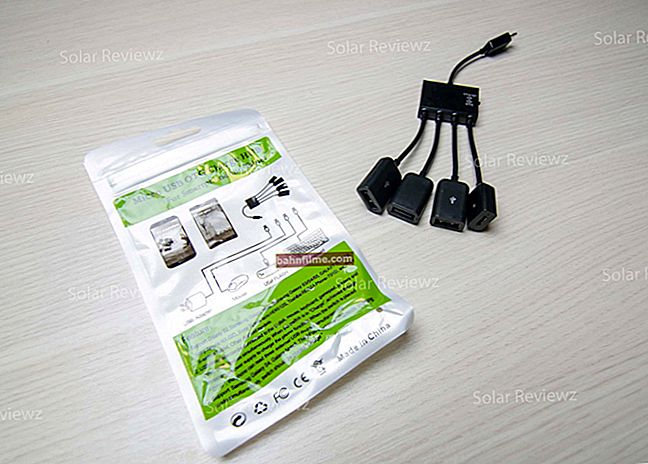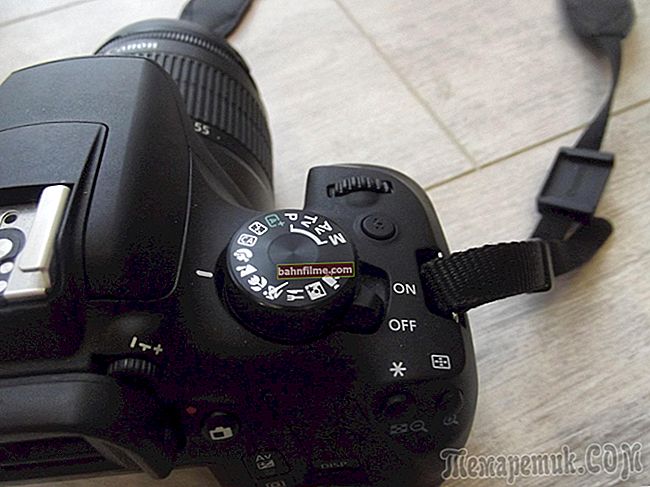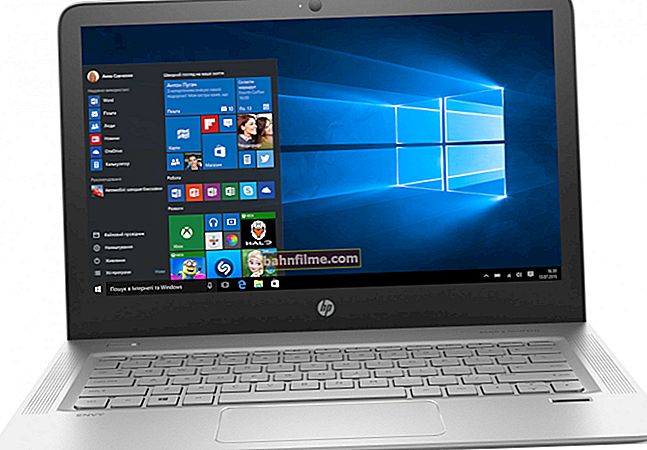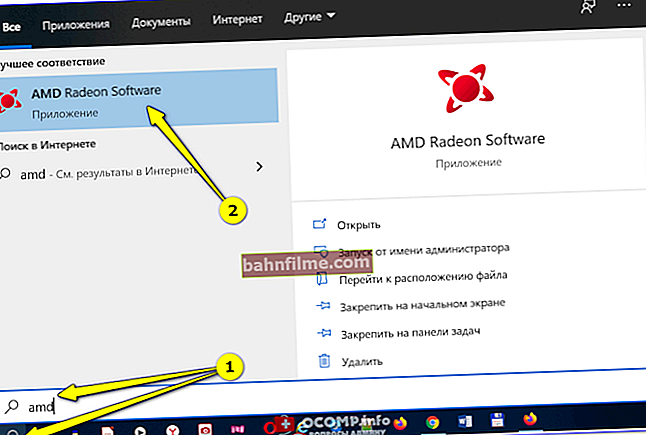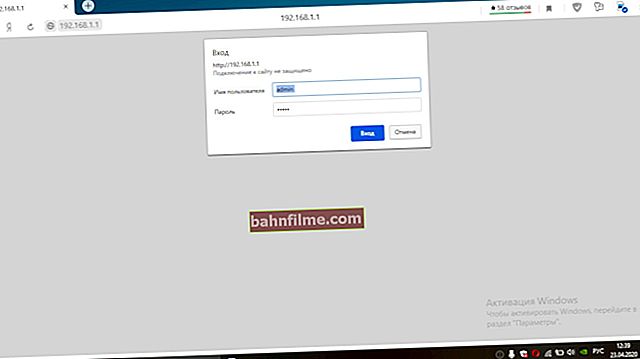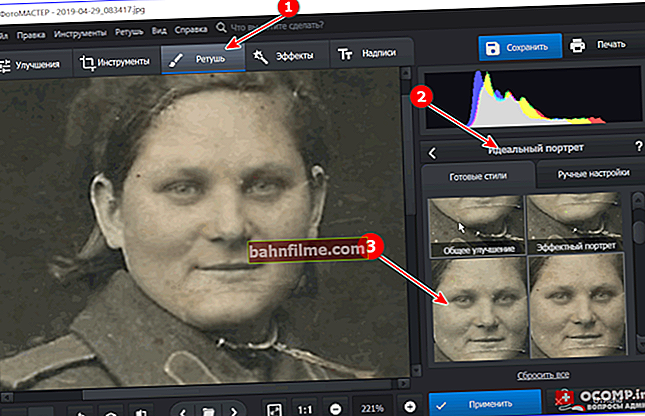 All the best!
All the best!
From my own experience, I can say that users, most often, face the problem of quiet sound when reinstalling Windows OS (less often when replacing equipment with a new one).
In general, quiet-quiet strife: if you turn up the volume by 100%, and the sound is barely audible, then the problem is obvious, but if you expect the volume from a budget laptop like a muses. center - here without comments, my article is unlikely to help you 😎.
In general, below I want to give several reasons due to which the sound can "deteriorate" (crackling, grinding, hissing) and its volume decrease. I will also give some tips for increasing the volume ☝.
So...
👉 Remark!
If you have no sound at all, I recommend that you read this note.
*
Quiet sound reasons. How to amplify the sound!
Fine Tuning Sound: Loudness and Communication
First of all, I still recommend doing two things:
- click on the icon with sound (how it looks in Windows 10 -
 , in Windows 7 -
, in Windows 7 - ) and try running Detect audio problems ... Such a simple thing in many cases helps to check and fix crashes and malfunctions in Windows;
) and try running Detect audio problems ... Such a simple thing in many cases helps to check and fix crashes and malfunctions in Windows; - open volume mixer (arrow-2, on the screenshot below) and turn up the volume for each application that will be there. Sometimes it happens that the sound volume is at a minimum only for some specific applications ...

Volume setting
Now about something more interesting: about communication.
There is such an option in Windows as "communication" - the point is that "smart" Windows reduces the volume when using the computer for conversations (that is, it does a plus for you - so that you can hear the interlocutor better).
But it so happens that this option works very badly - and it always reduces the sound, and not only during conversations ...
To check this: go to the Windows Control Panel and open the section "Hardware and Sound / Sounds" (see screenshot below 👇).

Hardware and Sound - Sound
After, go to the tab "Communication" and put the slider "no action required" ... Save the settings and restart your computer (the last step is required!). Then test what the volume has become.

Sound - no action required
A few words about loudness
There is another option in Windows that can significantly affect the volume. It is about loudness - special an option to eliminate the difference in loudness, taking into account the peculiarities of human perception. If you have problems with quiet sound - I recommend this enable option .
To do this, go to the control panel and open the section "Hardware and Sound / Sound" : in the tab "Playback" select your sound source (speakers, headphones) and go to them properties (see screenshot below, arrow 1-2 👇).
Then open the tab "Improvements" and in the properties find the option "Loudness" - turn it on, save the settings and check the sound quality again (by the way, in Windows 8.1 this option is called a little differently - "Additional features / volume leveling").

Loudness
Checking connectors and wires
One of the most common causes of sound distortion, the appearance of noise, crackling, and a decrease in volume is poor contact between the speakers of the speakers (headphones) and the sound card of the computer.
This occurs, most often, due to "broken" connectors and plugs, as well as damage to the insulation of the wires (an example of a broken wire from the headphones is shown in the photo below 👇). If such defects appear, I recommend replacing the wire (or re-soldering, if there is such experience ...).

Broken wire at the headphones
In general, a wire break may be "invisible" - ie. the braid on the top will be intact, while the copper core inside will be damaged. Try to twist the wire, and if the sound disappears, then distortions appear, the problem is obvious.
You can also check the headphones (speakers) by connecting them to another PC, tablet, music. center, etc.

Connecting Bluetooth receiver to music speakers. center
If the problem is related to the connectors on the sound card, then either repair or use an external sound card. Now, for example, there are such "babies" the size of an ordinary flash drive, while many of them can produce sound quality no worse than built-in sound cards.
👉 To help!
You can buy cheap various little things (like a sound card) on AliExpress.

External Sound Card
Checking and updating drivers
In every 3-4th problem with sound, the drivers are to blame! More precisely, their absence, or the wrong version for this OS.
In general, most often, in case of problems with the sound driver, there is no sound at all (I apologize for the tautology). But it so happens that there was (for example) Windows 7 - and then it was updated to Windows 8/10. According to my observations, after such an update, there are problems with the sound ...
First, I recommend opening device Manager ... The easiest and fastest way to do this is to press WIN + R , enter devmgmt.msc , press OK .
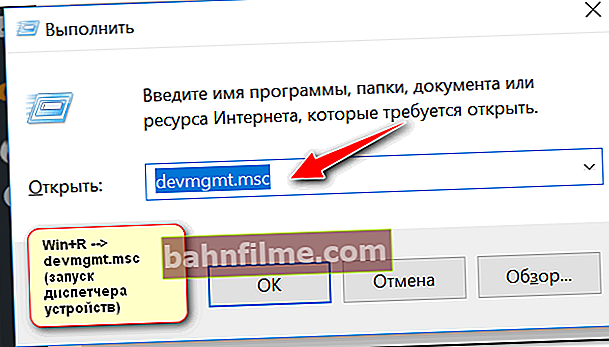
Launching Device Manager - devmgmt.msc
In Device Manager, open the tab "Sound, game and video devices" ... This tab should display your sound card (for example, in the screenshot below - Realtek High Definition Audio).
👉 If, instead, the tab is empty, or you see the icon "Unknown device" with a question mark  - means there is no driver.
- means there is no driver.

Updating Windows Drivers
👉 Important!
In case of problems with audio drivers - I recommend that you read the next article
To update your driver on Windows: just right-click on the device (for which you are updating drivers), and in the context menu, select "Update drivers" (arrow-1-2 on the screenshot above).
👉 Note!
You can also update drivers in automatic mode - for this you need a special. utility
For example, the screenshot below shows the Driver Booster program, with which you can update the sound driver in 1 click ... Convenient? Conveniently!

Update everything - game components, sound and game devices, etc. / Driver Booster
Setting up an audio driver: using Realtek as an example
The volume also depends on the settings of the audio driver (and on the version of the driver itself, but this was discussed a little higher ☝). I suggest considering the settings based on one of the most popular drivers - Realtek ...
👉 To help!
No badge from Realtek HD Manager! How to enter the Realtek control panel, otherwise I can not configure the sound in any way
Device selection
When you connect any device to the input of a sound card, as a rule, a message from the Realtek driver pops up, asking you to indicate what kind of device you connected. The volume level also depends on the correct type of device.
In some cases, forced switching of the device type helps: from headphones to speakers (or vice versa). Try both.
Note: to bring up the window for selecting the type of connected device - try to remove the plug from the speakers (headphones) from the sound card, and then insert it again.

Realtek headphones
Adjusting the playback volume
In the control panel of the Realtek sound card - there are several volume sliders (something like a mixer in Windows). For example, if your Front slider is set at 60% (and the speakers are connected to the front side of the system unit), then until you raise it by 100%, your sound will not become louder!
So a simple tip: open the mixer in Realtek and set all the volume sliders (which will be there) to 100%!

Realtek - volume to maximum
👉 Supplement!
If you have headphones (speakers) connected to the front of the system unit, try connecting them to the back.
Codecs, video and audio players
If you have a weak sound only when watching movies or listening to music, then most likely the problem is in audio-video codecs (or in players).
Here the advice is simple: REMOVE all codecs from the system completely and try to install a set from the 👉 K-Lite Codec Pack (a full description is available here).
Moreover, during installation, be sure to turn on the mode "Lots of stuff" , as in the screenshot below. This way you will get all the necessary and modern codecs for today!
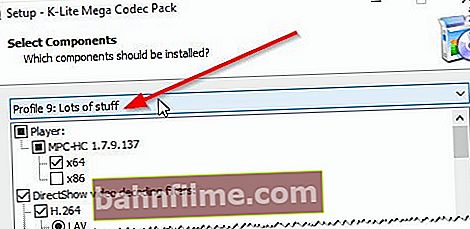
How to install codecs correctly ...
By the way, pay attention to the VLC player - it is not only good when playing network video, but also when watching videos from your hard drive. It has an option to increase the sound volume up to 125%!
👉 To help!
1) The best codecs for Windows - my selection
2) 10 free players for Windows - my selection

VLC - volume at 125%
Volume Booster Programs
The last thing I recommend is to try running special programs to amplify the sound. A whole article is devoted to them on my blog (link below)!
👉 To help!

Programs for increasing the volume on a computer - my selection
In general, I recommend trying Sound Booster (its screenshot is shown below). Its main advantages:
- installed, configured once, and it works (it starts every time the computer is turned on);
- boosts the volume up to 500%!
- supports all popular programs, games, players, etc .: Skype, ICQ, Windows Media Player, etc.

Boost the volume by 500%!
*
That's all for now ...
I hope at least one recommendation works for you!
For additions on the topic - thanks in advance.
Good luck!
👋
First publication: 12/14/2016
Correction: 01/05/2020
 , in Windows 7 -
, in Windows 7 - ) and try running Detect audio problems ... Such a simple thing in many cases helps to check and fix crashes and malfunctions in Windows;
) and try running Detect audio problems ... Such a simple thing in many cases helps to check and fix crashes and malfunctions in Windows;
